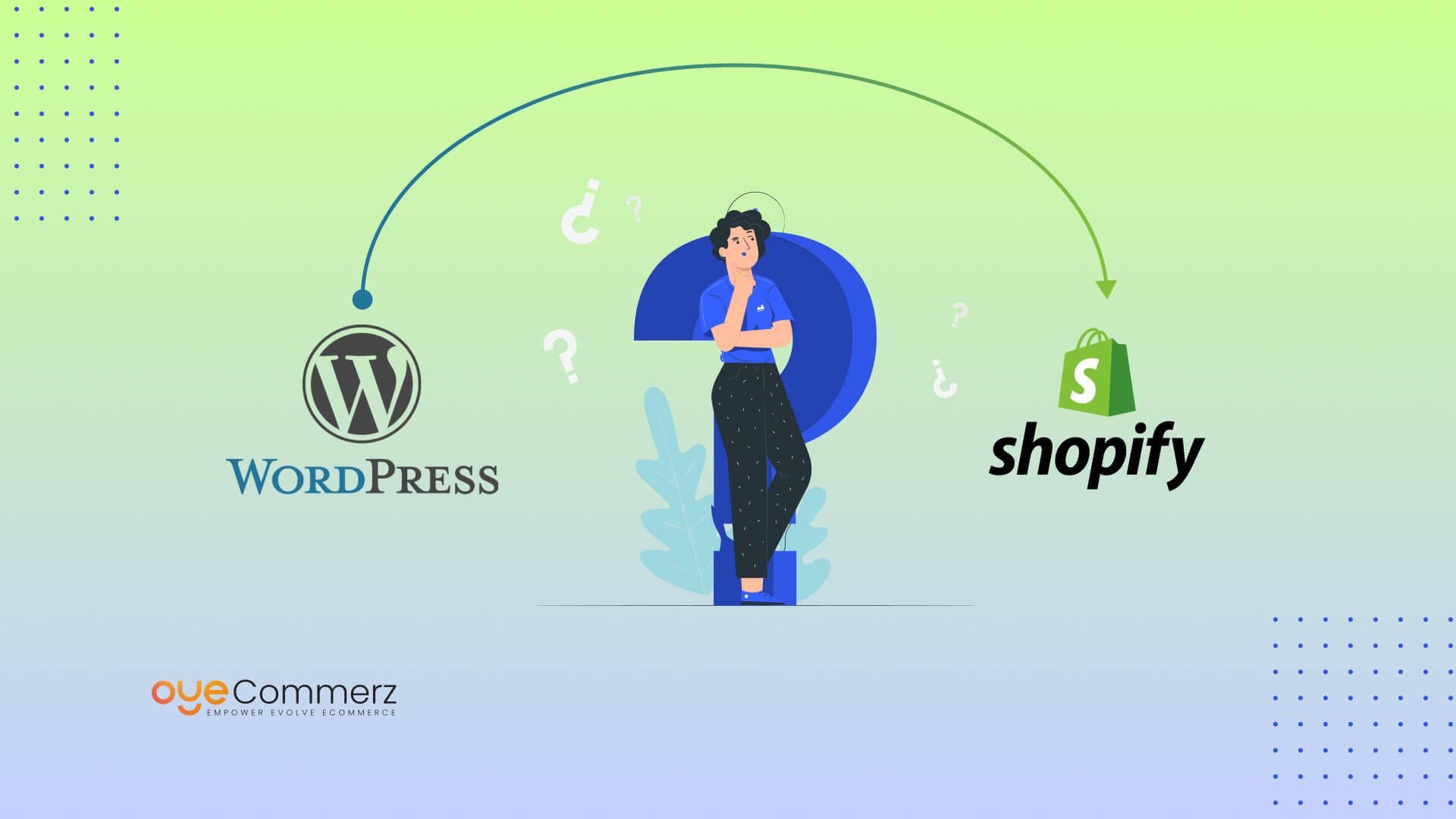Transitioning from WordPress to Shopify marks an exciting step toward streamlining your e-commerce processes. As businesses expand, choosing a platform that aligns with growth potential, user experience, and flexibility is essential. Shopify has emerged as a preferred choice for online merchants, providing superior adaptability, security, and user-friendliness. In this guide, we will delve into the transformative impact of this migration, discuss the advantages, and share actionable steps to facilitate a seamless move.
1. Top Reasons to Transition from WordPress to Shopify
The combination of WordPress and WooCommerce, has served countless e-commerce platforms. However, as companies scale, challenges like reliance on plugins, security vulnerabilities, and complex setups can hinder growth. Shopify, specifically created for e-commerce, addresses these issues with an all-in-one, intuitive solution. Statistics supports this transition—Shopify powers over 4.4 million websites worldwide, with a documented 10% boost to sales performance for numerous merchants post-switch.
2. Shopify's Perks for Thriving Online Stores
Shopify’s powerful platform caters for expanding businesses. Its standout features include:
- Effortless Design Flexibility: Shopify offers over 80 professionally designed themes.
- Built-in Features: Features like Shopify Payments and integrated SEO save time and effort.
- International Expansion: Currency versatility and localization features enable brands to expand internationally.
Additionally, Shopify boasts an availability percentage of 99.98%, guaranteeing your store remains accessible.
3. Preparing for WordPress to Shopify Migration
Before migrating, assess your existing setup. Review product data, customer details, and SEO performance. Resources such as Shopify’s Migration Kit or external tools can simplify this process. Create a detailed strategy, making sure all assets—item details, media files, and blog content—are ready for seamless import.
4. Data Migration: A Critical Step
Transferring your data forms the foundation for a smooth platform switch. When moving from WordPress to Shopify, focus on:
- Inventory Details: SKU, item summaries, and groupings.
- Customer Data: Emails, order history, and preferences.
- Search Engine Considerations: Preserve meta tags, URLs, and redirects to avoid SEO losses.
Leverage apps like LitExtension to facilitate seamless migration while reducing mistakes.
5. Tailoring Your Shopify Store to Fit Your Brand
Post-migration, customizing your Shopify store helps it aligns with your business identity. Utilize Shopify’s intuitive page builder to create layouts with ease. Shopify's themes are mobile-responsive, providing a seamless UX across devices—a key point, given 74% of e-commerce traffic is generated by mobile E-commerce re-platforming users.
6. Maintaining SEO During Migration
Search engine optimization is crucial for preserving your online presence during migration. Shopify is highly optimized for search engines with clean URL structures, preloaded features, and seamless blog integration. Make sure you:
- Implement 301 redirects for existing links.
- Enhance updated content with keyword-rich content.
- Leverage plugins like Plug in SEO to track analytics post-migration.
7. Post-Migration Testing
After finishing the transfer, conduct thorough testing.
Review: - Website speed (Shopify delivers faster speeds in contrast with WordPress).
- Functionality of payment gateways and checkout processes.
- Mobile responsiveness.
Quality assurance ensures your store provides a smooth shopping experience from day one.
8. Real-Life Success Story
An example of effective platform switching is Gymshark, a sportswear company that transitioned to Shopify. Post-migration, the company saw a 60% boost in mobile sales and reduced site downtime. This showcases the capabilities of Shopify in driving e-commerce growth.
9. Overcoming Common Migration Issues
Migration comes with challenges, such as data integrity and adjusting tailored features. However, Shopify’s robust support and external professionals make overcoming these hurdles manageable. Collaborating with experienced Shopify developers helps guarantee a trouble-free transition.
10. Starting Your Journey with Shopify
Switching from WordPress to Shopify marks a strategic decision to e-commerce. By addressing scalability, simplifying management, and enhancing the customer experience, Shopify empowers businesses to succeed in competitive markets.
Conclusion
Switching from WordPress to Shopify is a strategic move that can greatly enhance your online business performance. With a robust migration plan, the right tools, and expert support, you can unlock new success milestones.
Ready to make Migrating eCommerce platforms the leap? Reach out today to learn how our Shopify migration services can transform your e-commerce platform. Get in touch today, or consider: Is it time to seize Shopify’s advantages for your store?
